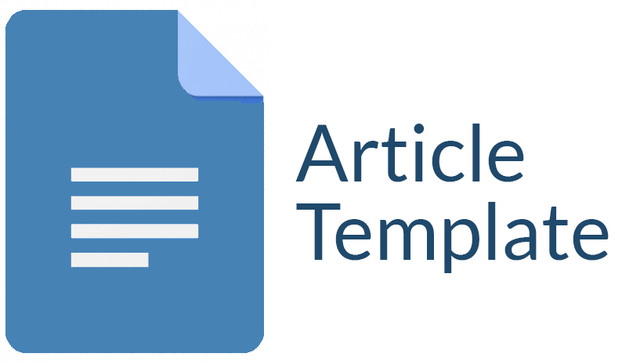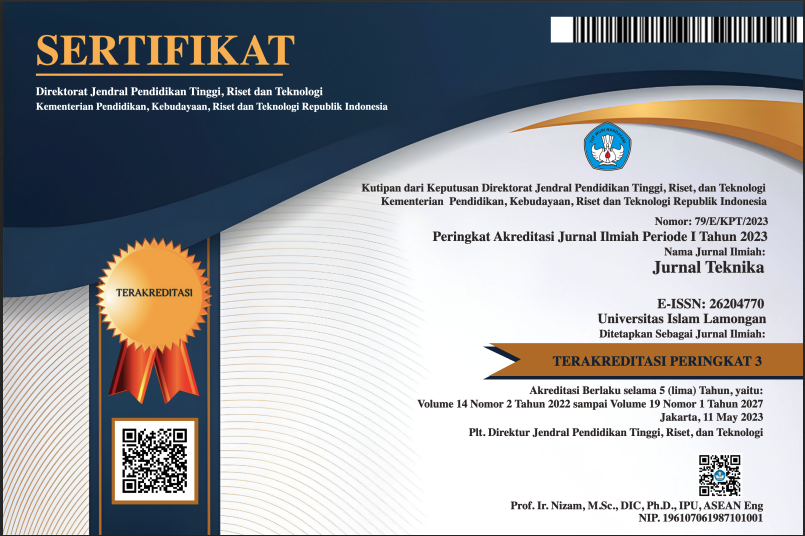Pemanfaatan Ekstrak Lidah Buaya Sebagai Bio-Baterai Untuk Sumber Energi Peralatan Elektronik
DOI:
https://doi.org/10.30736/jt.v13i1.597Keywords:
Teknik ElektroAbstract
One of the electrical energy is a battery, but battery will produce waste that is difficult to decompose naturally. The Indonesian government in 2025 wants as much as 23% of national energy to come from renewable energy and 8.3% from bioenergy. The mineral content of aloe vera has the potential as an electrolyte solution, so it can be used to conduct electricity. Based on this, the researchers conducted research by creating an eco-friendly and renewable battery using aloe vera extract. The results of the research are the creation of an aloe vera extract battery box, the voltage generated is 71,5V, the aloe vera extract battery box is capable of turning on LED lights, incandescent lamps and mini electrical control panels. In addition, the use of aloe vera extract as a battery has several advantages such as eco-friendly, rechargeable, cheaper than an ordinary battery and can produces more energy.
Downloads
References
Achmad, H. 2001. Elektrokimia dan Kinetika Kimia. Bandung: Citra Aditya Bakti.
Chang, Raymond. 2005. Kimia Dasar Edisi Ketiga jilid 2. Jakarta: Erlangga.
Fadilah, Syifa., Risa Rahmawati dan MP Kim. 2015. Pembuatan Biomaterial dari Limbah Kulit Pisang (Musa Paradisiaca). Jurnal Prosiding Simposium Nasional Inovasi dan Pembelajaran Sains, 8(9), 45 – 49.
Jatnika, A. dan Saptoningsih. 2009. Meraup Laba dari Lidah Buaya. Jakarta: Agro Media Pustaka.
Khan, Majharul Haque dan Kurny, A. S. W. 2012. Characterization of spent household zinc-carbon dry cell batteries in the process of recovery of value metals. Journal of Minerals & Materials Characterization & Engineering, 11(6), 641-651.
Kementerian ESDM. 2021. Capaian Minim, ESDM Pede Target EBT 23% Tercapai di 2025. Diakses dari https://www.cnbcindonesia.com/news/20210115102331-4-216199/capaian-minim-esdm-pede-target-ebt-23-tercapai-di-2025 pada tanggal 31 Mei 2021, pukul 23.29 WIB.
______. 2014. Kementerian ESDM Optimis Target EBT dari Bioenergi pada 2025 Bisa Tercapai. Diakses dari https://www.mongabay.co.id/2014/11/26/kementerian-esdm-optimis-target-ebt-dari-bioenergi-pada-2025-bisa-tercapai/ pada tanggal 31 Mei 2021, pukul 23.29 WIB.
Linda Suyati., et al. 2010. Pembuatan dan Karakterrisasi Elektrolit Padat NaMn2-xMgxO4 : (I). Semarang: Universitas Diponegoro.
Santoso, Hieronymus Budi. 2008. Ragam dan Khasiat Tanaman Obat. Jakarta: Agro Media Pustaka.
Sugiyono. 2016. Metode Penelitian Kuantitatif, Kualitatif dan R&D. Bandung: PT Alfabet.
Utami, B., Nugroho, A.C., Mahardiani, L., Yamtinah, B. 2007. Kimia Untuk SMA dan MA Kelas XII Program Ilmu Alam. Jakarta: Pusat Departemen Pendidikan Nasional.
Downloads
Published
How to Cite
Issue
Section
License
Copyright (c) 2021 Rizal Justian Setiawan, Indra Dwi Suryanto

This work is licensed under a Creative Commons Attribution-ShareAlike 4.0 International License.
Jurnal Teknika dilisensikan di bawah Attribution-ShareAlike 4.0 International (CC BY-SA 4.0). Anda bebas untuk:
Â
- Bagikan — salin dan distribusikan ulang materi dalam media atau format apa pun
- Beradaptasi — me-remix, mengubah, dan membangun materi untuk tujuan apa pun, bahkan secara komersial. Lisensi ini dapat diterima untuk Karya Budaya Bebas.
Pemberi lisensi tidak dapat mencabut kebebasan ini selama Anda mengikuti persyaratan lisensi.
- Atribusi — Anda harus memberikan kredit yang sesuai, memberikan tautan ke lisensi, dan menunjukkan jika ada perubahan. Anda dapat melakukannya dengan cara yang wajar, tetapi tidak dengan cara apa pun yang menunjukkan bahwa pemberi lisensi mendukung Anda atau penggunaan Anda.
- ShareAlike — Jika Anda me-remix, mengubah, atau membangun materi, Anda harus mendistribusikan kontribusi Anda di bawah lisensi yang sama seperti aslinya.
- Tidak ada batasan tambahan — Anda tidak boleh menerapkan persyaratan hukum atau tindakan teknologi yang secara hukum membatasi orang lain untuk melakukan apa pun yang diizinkan oleh lisensi.
Â
Hak Cipta
Penulis yang menerbitkan dengan jurnal ini menyetujui persyaratan berikut:
Â
Penulis mempertahankan hak cipta dan memberikan jurnal hak publikasi pertama dengan karya yang dilisensikan secara bersamaan di bawah Attribution-ShareAlike 4.0 International (CC BY-SA 4.0) yang memungkinkan orang lain untuk berbagi karya dengan pengakuan kepenulisan karya dan publikasi awal di jurnal ini .
Penulis dapat membuat pengaturan kontrak tambahan yang terpisah untuk distribusi non-eksklusif dari versi jurnal yang diterbitkan dari karya tersebut (misalnya, mempostingnya ke repositori institusional atau menerbitkannya dalam sebuah buku), dengan pengakuan publikasi awalnya di jurnal ini.
Penulis diizinkan dan didorong untuk memposting karya mereka secara online (misalnya, di repositori institusional atau di situs web mereka) sebelum dan selama proses pengiriman, karena dapat menghasilkan pertukaran yang produktif, serta kutipan lebih awal dan lebih besar dari karya yang diterbitkan (Lihat Pengaruh Akses Terbuka).
 
Jutnal teknika oleh Universitas Islam Lamongan berlisensi Creative Commons Attribution-ShareAlike 4.0 International License.
Berdasarkan karya di https://jurnalteknik.unisla.ac.id/index.php/teknika/index









